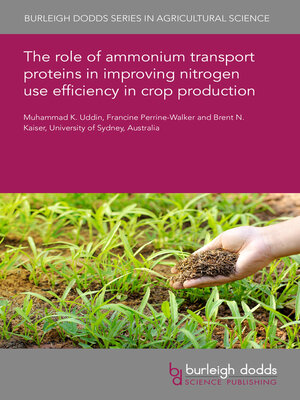The role of ammonium transport proteins in improving nitrogen use efficiency in crop production
ebook ∣ Burleigh Dodds Series in Agricultural Science
By Muhammad Uddin

Sign up to save your library
With an OverDrive account, you can save your favorite libraries for at-a-glance information about availability. Find out more about OverDrive accounts.
Find this title in Libby, the library reading app by OverDrive.



Search for a digital library with this title
Title found at these libraries:
| Library Name | Distance |
|---|---|
| Loading... |
Nitrogen (N) is a key macronutrient required for plant growth and reproduction. Ammonium (NH4+) is a readily available nitrogen source for plant growth and an important contributor to net plant nitrogen uptake and utilisation. It is suggested that members of the high-affinity ammonium transporter family (AMT) and the low-affinity ammonium major facilitator (AMF, non-AMT type) NH4+ transporters operate respectively as high-affinity (HATS) and low-affinity (LATS) transport pathways, both contributing to the management of overall plant NH4+ transport, uptake and cellular redistribution. In this chapter, we will examine NH4+ transport systems operating across different plant cell types and tissues in both a N2-fixing legume root nodule and in the model plant, Arabidopsis thaliana.







